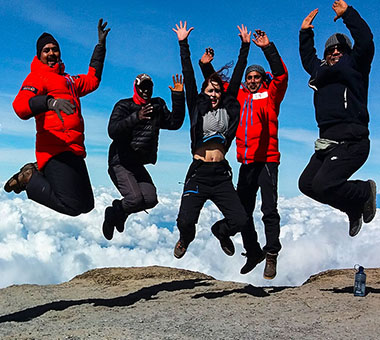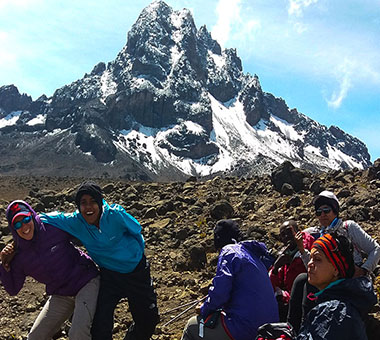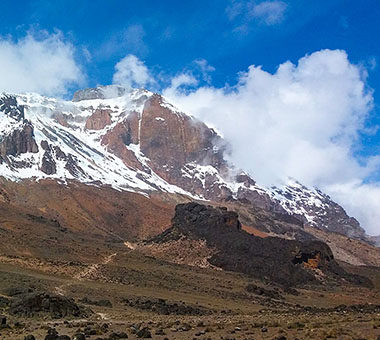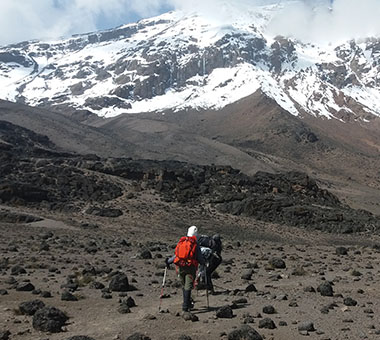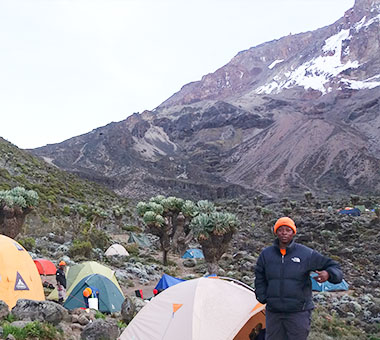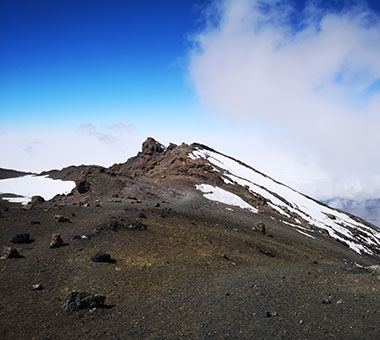Kilimanjaro Trekking
Welcome to Africa's tallest mountain
Key Steps to reach your Kilimanjaro Goals
Step One
Get to know about the mountain, and what it takes to climb it. We have prepared an overview of Mount Kilimanjaro, its routes and other interesting facts for you.
Step Two
Choose your route, number of days and decide when you want to climb it. We are help to help you make the right choice. Contact us today.
Step Three
Book your trek and start preparing for it. We are your perfect choice for a local trekking company. Once you book, we can help you with the preparations.
Step Four
Show up and let’s climb together. It will be so much fun and an unforgettable experience. The summit awaits you and we will take you there.
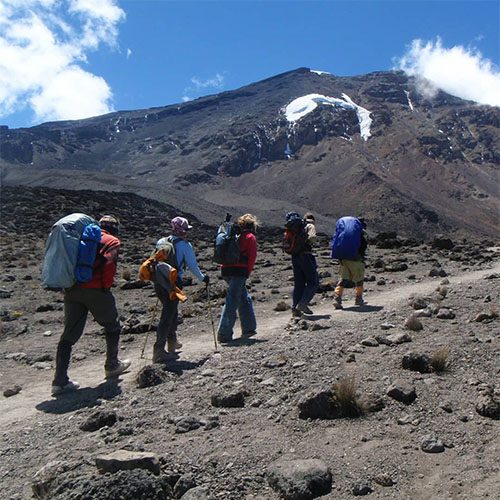
Overview of Mount Kilimanjaro
The world's highest free standing mountain
Mount Kilimanjaro is in Tanzania, East Africa. This dormant volcanic mountain has 3 peaks, but only two are accessible. Mawenzi Peak is a technical one , where as Kibo Peak is not, hence most people when they talk about climbing Kilimanjaro they talk about reaching the summit of Kibo Peak. The third peak is Shira, but doesn’t exist any more due to further volcanic eruptions thousands of years ago.
Climbing Kilimanjaro requires a minimum of 5 days. You have 7 climbing routes to choose as we will show you below. However, other than Marangu route, the rest of the routes requires a minimum of 6 days to climb. Check our Frequently Asked Questions(FAQs) to learn more about climbing Kilimanjaro.
KILIMANJARO ROUTES
Choose a route you want to explore and view its itinerary
Said to be the easiest due to its being relatively flat compared to other routes. However, as you keep ascending, the hardship is realized. The main advantage is you sleep in huts and you can do it in a minimum of 5 days. Its prices are fairly cheaper compared to those of other routes.
This is a challenging route due its ups and downs as you find your way to the base camp. You will sleep in tents and you need a minimum of 6 days to complete it. A scenic route and the one you can count on for acclimatization as you will trek high and sleep low on some days.
It is a remote route that starts near the border of Tanzania and Kenya. Mostly preffered by trekkers as its campsites are relatively near to each other that means short distances of walk. It can be done in a minimum of 6 days. You descend through the Marangu route trail.
It is the most scenic route with a high chance of acclimitization hence high chance of success. It joins the Machame route normally on day 3. This is a fairly steep and difficult route but very rewarding.
Quite and scenic route away from the trails taken by many. However you need at least 9 days to complete it. You start along the same trails as those who do the Lemosho route, but on the way you depart to the norhern circuit.
The most difficult route as the ascent is very steep and takes little time to gain a descent amount of elevation. If you are not used to high altitudes this should not be your choice. Along the way, it joins the Machame and Lemosho routes.
With the exception of day one, Shira route takes similar trails as the Lemosho. On day 1 you will be driven to the starting point which is at a high altitude of 3400 meters. You will have the same great views as those of the Lemosho route.
Frequently Asked Questions
You don’t need to be an athlete or a highly trained mountaineer however you need some physical training to strengthen your muscles and get used to endurance because on the mountain you will be walking about 7 kilometers on many days. We recommend that your training for Kilimanjaro include strength training exercises and regular walks or jogging on different trails.
It depends on the route. For example you could be trekking 4 hours on one day, while the next day trek 7 hours. The summit walk takes about 14 hours, that is ascending and descending.
Your daypack should weigh a maximum of 7 kgs, while your duffel bag should weight at most 15 kgs.
The best time to climb Kilimanjaro is during dry seasons.
The dry seasons are: mid of December to the beginning of March, and from late June to mid of October.
Yes, all campsites have basic toilets – the long drops. We can supply to you a portable flush toilet at an extra charge.
Our guides are highly trained on attitude sickness management, and are certified wilderness first responders. Every day the guides will ensure they check your Oxygen level at least twice using Pulse Oximeter. In case of an emergency, we have a rescue plan in place. Lightweight stretchers, a first aid kit, and an oxygen cylinder.
Our guides are highly trained on attitude sickness management, and are certified wilderness first responders. Every day the guides will ensure they check your Oxygen level at least twice using Pulse Oximeter. In case of an emergency, we have a rescue plan in place. Lightweight stretchers, a first aid kit, and an oxygen cylinder.
The weather is quite unpredictable on Kilimanjaro, generally expects temperatures at 20F and may fall up to -20F. or sometimes below that.


